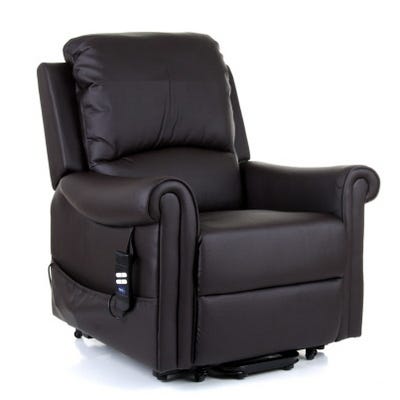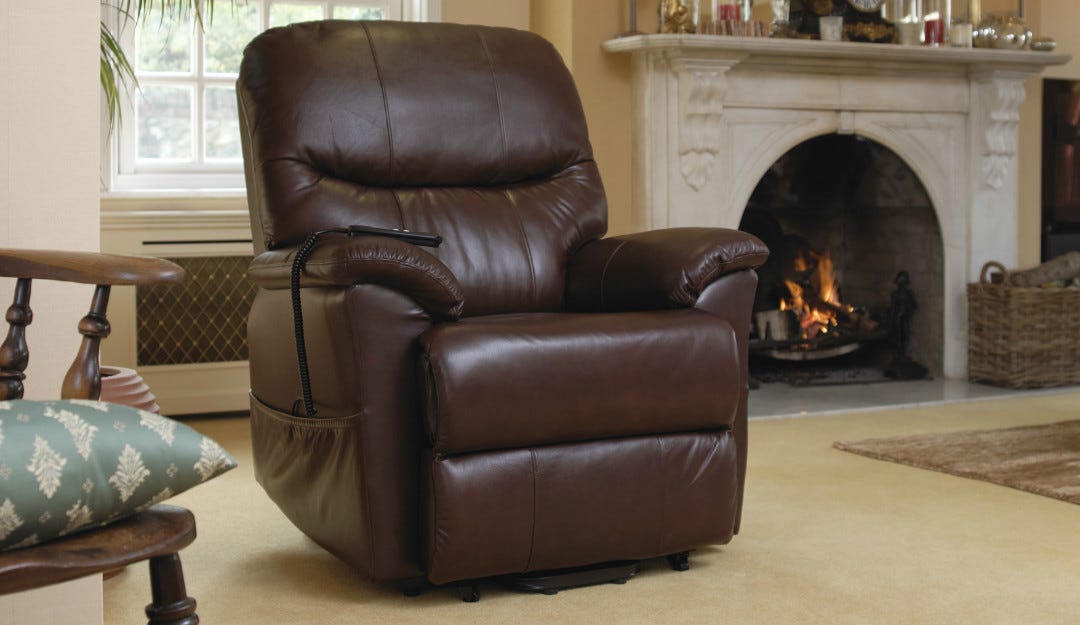Many people who consider a riser recliner would like one upholstered in leather, but it’s not cheap and budgets don’t always stretch far enough.
The alternative is to go for fabric, but if you have your heart set on leather it’s a big compromise to make. There is a third option however; faux leather. There are a couple different types of faux leathers, but are they as good as the real thing?
PVC (Polyvinyl Chloride) Faux Leather
PVC is usually the most commonly found faux leather. Made from polyester fibres that are coated with a vinyl made from – you guessed it – polyvinyl chloride and also plasticisers.
The material maintains its flexibility; however, this does make it less soft to the touch and breathable in comparison to real leather. The upside to PVC faux leather is its resilience and easy to maintain surface, as it doesn’t require special treatments.
The choice to use a PVC keeps the cost down significantly in comparison to genuine leather and it still has the attractive appearance you would expect. Not only is cleaning this material incredibly simple, but any severe damage is far less costly in the event of a replacement.
 PU (Polyurethane) Faux Leather
PU (Polyurethane) Faux Leather
PU is another type of faux leather that is made by coating a fabric like cotton, polyester, or even shredded leather with a polymer and specially treating it.
PU is generally softer than PVC, with perhaps a closer resemblance to real leather, but it still lacks the breathability. In addition, there are no plasticisers making it less likely to peel or crack after very long periods.
However, cleaning it takes a little more care as some products could damage it.
The appearance is less shiny than PVC and has a muted matte appearance to it. Although the price is a little dearer than PVC it’s still significantly cheaper than real leather and is closer in terms of physical feel. So, if you are on a budget and want to compromise as little as possible, this may be the most suitable choice.
Is the Difference Noticeable?
You may be concerned about faux leather being dramatically different to the real thing, whether it’s down to comfort, appearance, resilience, or just wanting to keep it a secret. In terms of resilience both types are very long lasting, but they can puncture or tear under heavy stress unlike real leather.
Comfort wise is a personal preference, PVC is less soft to the touch but for some that isn’t a concern. Appearance wise both are very close in terms of resemblance.
Again, PVC may be more noticeable because of its sheen, but some real leather is treated to shine as well. So, if someone has a good eye they may spot the difference. Ultimately, if you like the fabric and think it’s worth it just sit back and enjoy.


 Price Match Promise
Price Match Promise
 Next day delivery, 7 days a week
Next day delivery, 7 days a week
 Nationwide Showrooms
Nationwide Showrooms
 Rated Excellent
Rated Excellent







